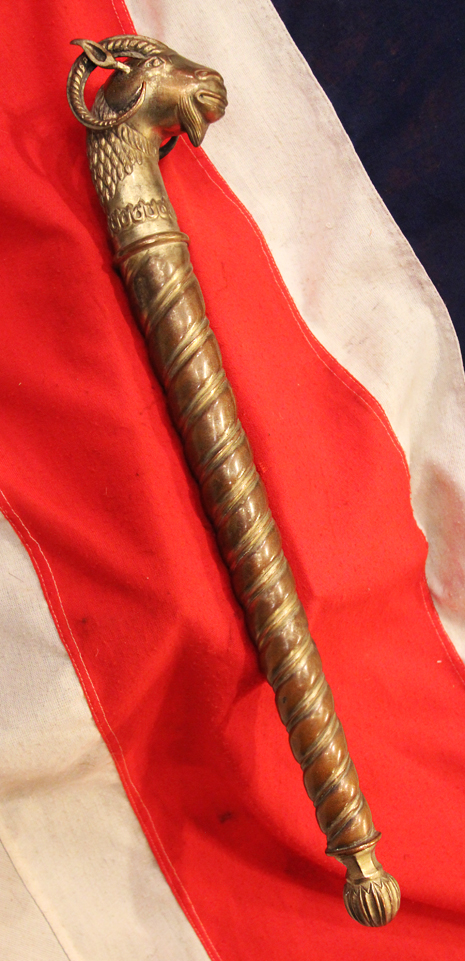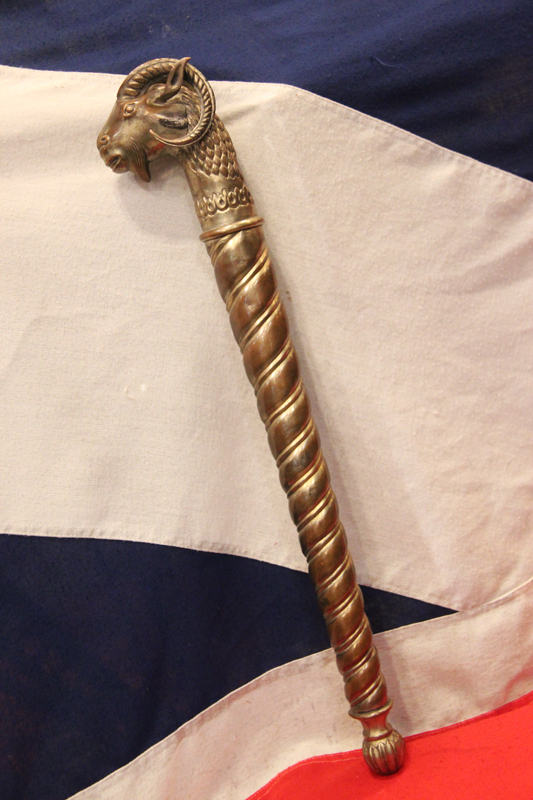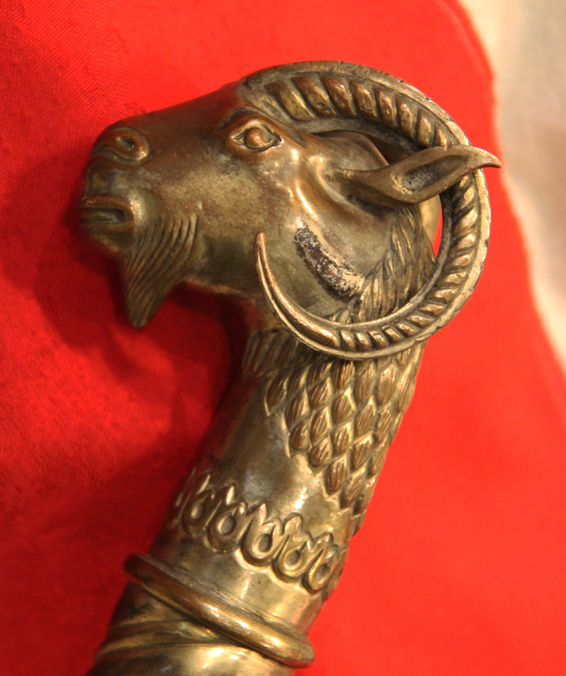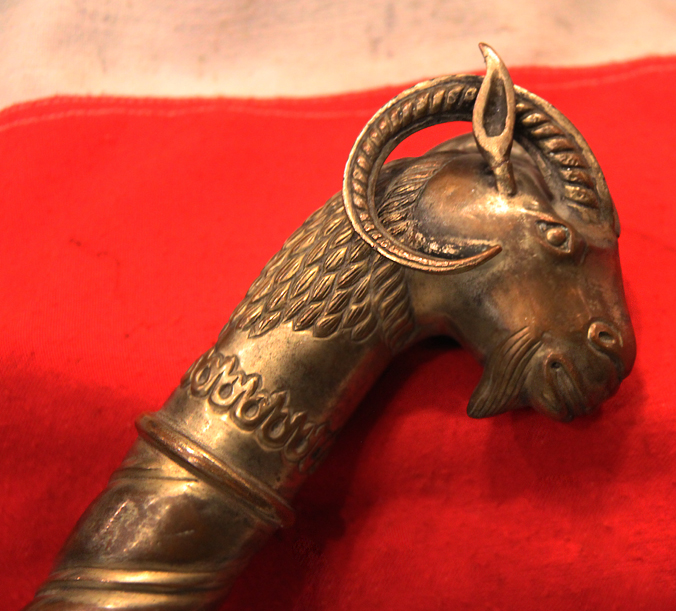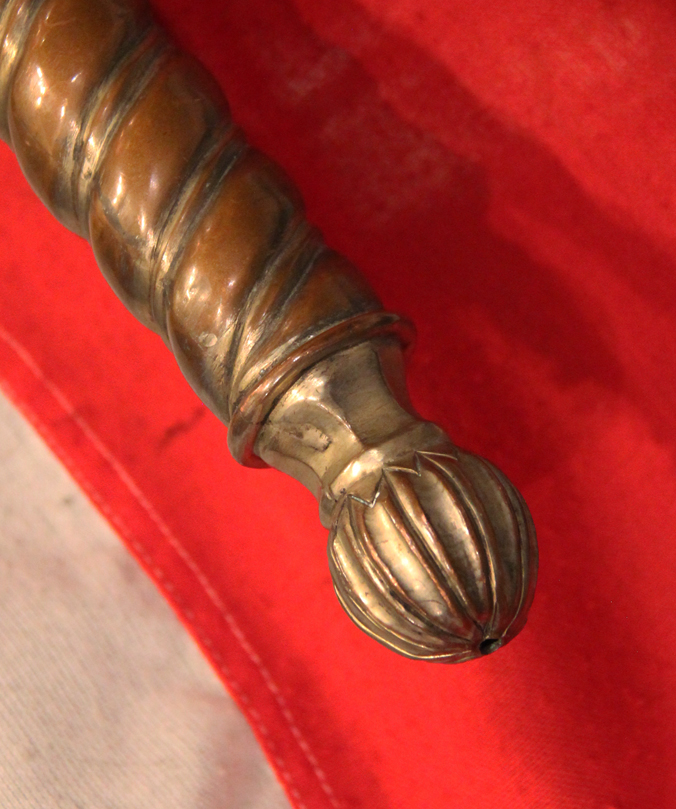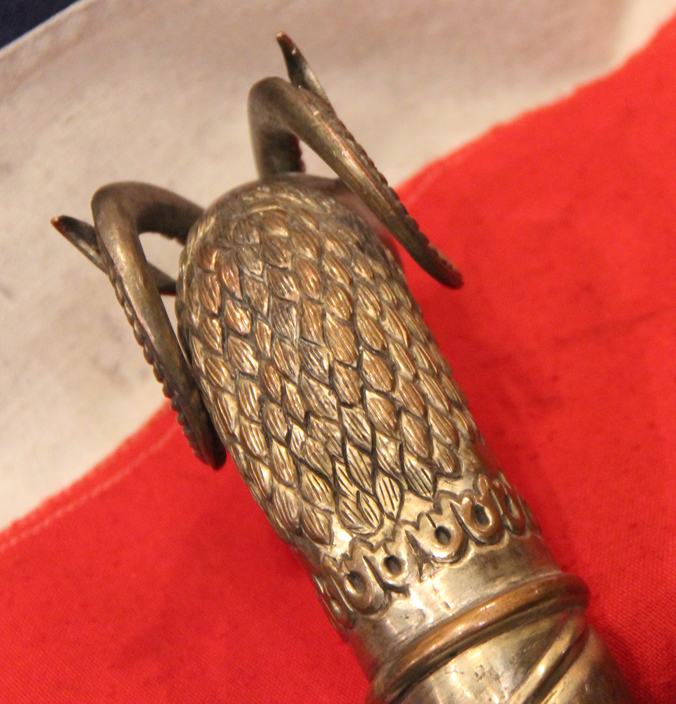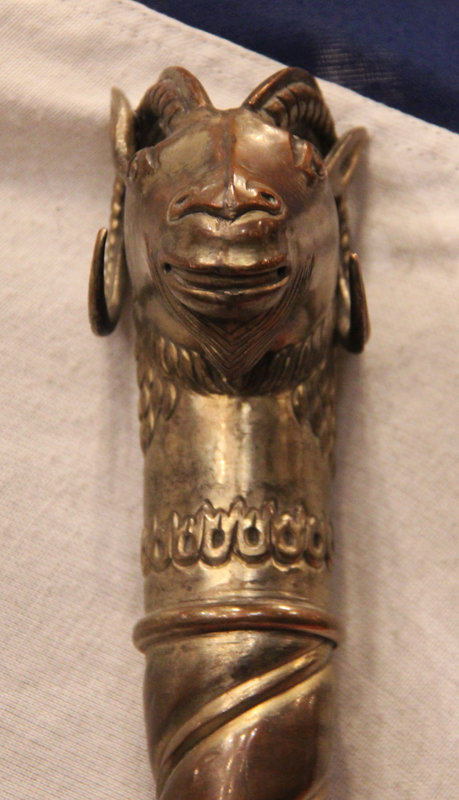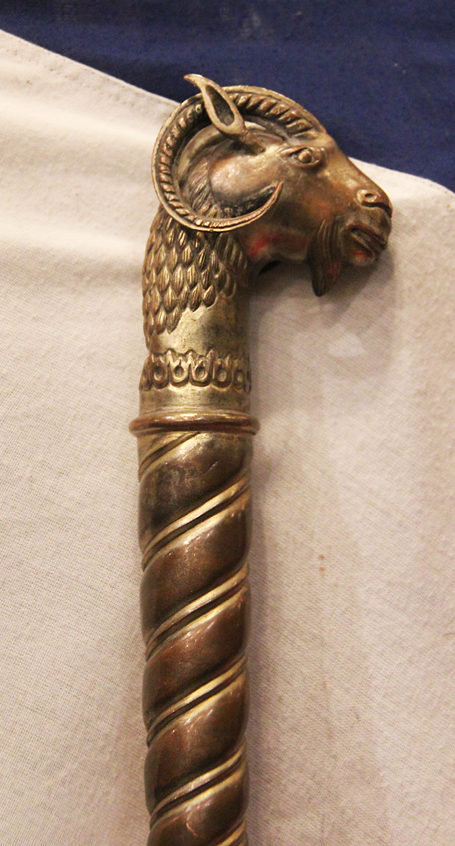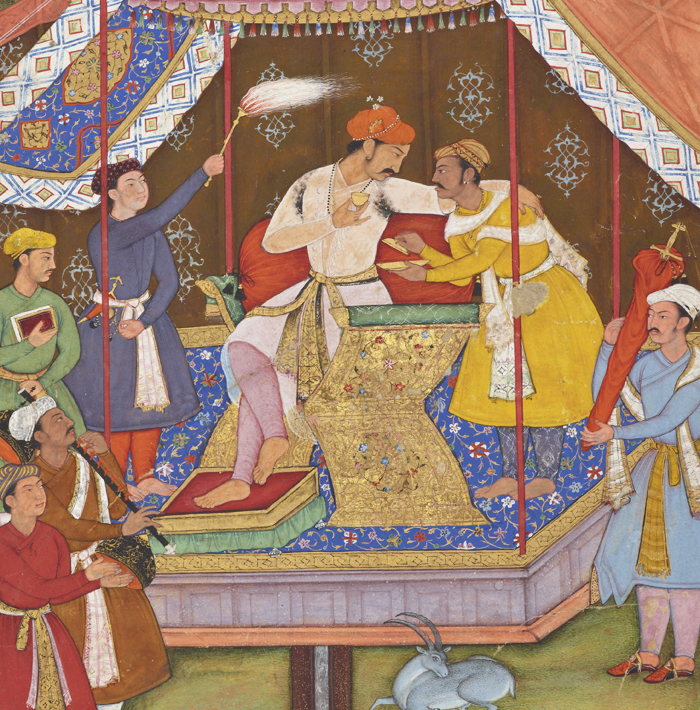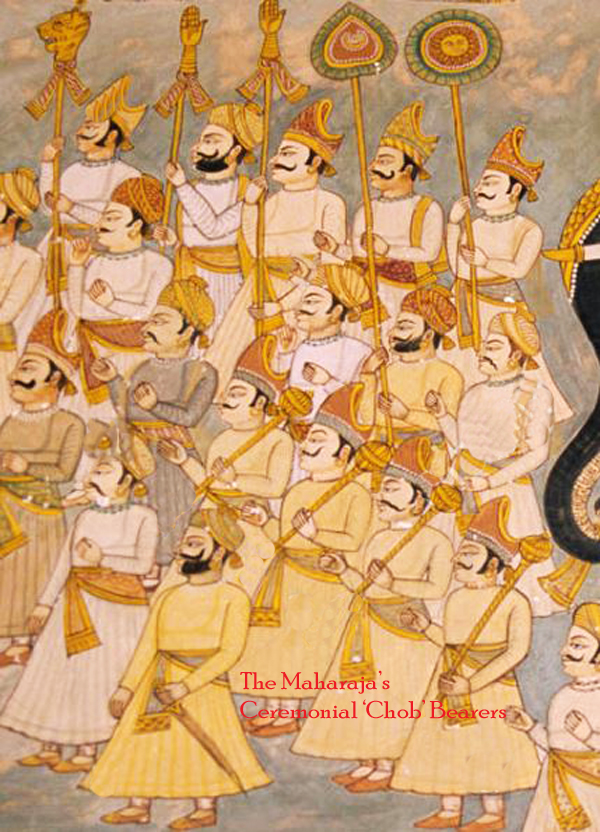Wonderful Antique Indo Persian, Mughal, Large Ram's Head Ceremonial & Instrument of War Mace 'Chob', A Thing of Rare Beauty. the Detailing of The Ram's Head Is Superb
A most beautiful, impressive and sizeable piece of zoomorphic object d'art, a noble court ceremonial mace. Paintings in miniature and chronicles of the Mughal court reveal that ceremonial maces were often richly ornamented and made of luxurious materials, this piece being a fine example, still has traces of its original silvered surface. The Chob (or ceremonial mace) in India, is a story of the past that echoed with the different versions of luxury being a part of daily life in India. The old kings and the maharajas in the mughal empire celebrated their daily routine with pristine, beautiful and valuable objects that exuded refined craftsmanship and the finest detail. These luxury objects are still evident in some states of the country which have initiated to preserve their story of heritage by different means .
One of these particular object is that of a ceremonial mace, popularly called the Chob. It was used as an instrument for war as well as in ceremonies comprising of Indian Mughal rituals. In Indian ceremonial context it was observed as a symbol of (authority) in and around the society of those times .
Chobs were present in Mughal court paintings depicted around the mace-bearers (stick bearers), standing inside the barrier of railings around the ruler, identified by its particular shape. Indian arms and furniture objects were profusely covered with very rich and fine materials for decoration. Emperor Jehangir( r.1605 ? 27 ) has clearly mentioned in his memoirs to a six flanged mace shashpar made out of solid gold. ( refer -The Tuzuk-I-Jahangir,or,Memoirs of Jehangir , trans.. Alexander Rogers ,ed. Henry Beveridge ;London ,1909;vol-1 ).
With a stunning mace head of a representation of the head of a ram, surmounting a spiral form haft. These exquisite objects of desire and utility came to life due to their surface treatment with material that could be be easily used in adornment . The native crafts of Awadh and northeastern parts of India played a pivotal role, the craftsmen were commissioned to carve out such bespoke creations for the maharajas and nobility. The functions of these ceremonial maces were of regulating entry to the immediate precincts of the throne. If you observe in the Padshanamah manuscript, for example, they are seen in presentation scenes in which objects of value are in evidence or where some level of security is needed for a barrier. King of the world: The Padshanamah, an imperial mughal manuscript from the Royal Library, Windsor Castle. One picture in the gallery shows the Mughul Maharaja's Ceremonial 'Chob' bearers marching in the parade carrying the simpler ball type Chobs. Hollow construction mace, with small impact dent to the rear head and an old repair to one rams ear. 22 inches long overall.
Code: 22517

